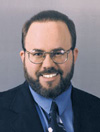The San Francisco Mint Coins of 1931, Part One
Posted on 2/1/2006

Every coin collector dreams of having a time machine at one time or another. Where would you go? To Philadelphia in 1793? To Carson City in 1870? I believe a lot of collectors would choose San Francisco in 1931, a year when just three denominations were coined at that city's U.S. Mint, all of them in relatively small numbers. While not great rarities, these issues are quite appealing for their low mintages, and it would be a thrill to scoop them up at face value.
The year 1931 was smack in the middle of a worldwide economic depression unequaled before or since. Factories were closing, and banks and businesses were failing in record numbers. Britain abandoned the gold standard, as would the USA just two years later. A quarter of the American workforce was unemployed at a time when there were no government relief programs of any kind. Local charities and missions were completely overwhelmed by the needy. Many young men and women, having no prospects of work, took to the road to lessen the burden on their families.
Against this backdrop it's not hard to imagine how that the demand for additional coins dropped to a trickle. In fact, so little activity occurred at the nation's mints that the overall U.S. Mint payroll fell drastically. From more than a thousand employees at the end of 1918, the number of persons employed at the three active mints declined to just 392 by 1933.
A total of 866,000 one-cent pieces were struck at the San Francisco Mint in 1931, the second lowest mintage for a circulating coin in the entire Lincoln cent series. Nearly all of these were coined before the end of the Mint's fiscal year on June 30, the remaining odd 66,000 pieces coming sometime later. As the existing supplies of cents were adequate for the very limited commerce of that time, most of these coins were simply bagged and put away in storage. It was not until things picked up a bit in 1934-35 that the 1931-S cents began to be shipped to banks for distribution.
In the meantime, collectors were unlikely to obtain this date through normal channels, having instead to purchase examples directly from the Treasury Department. It was the Treasury's practice at that time to offer coins to collectors at face value plus postage. The purchaser, however, was limited to just two coins of any date, denomination and mint, had to state the purpose for which the coins were desired and had to include separate payments for whichever mints were to furnish the coins! This cumbersome system remained in place until 1948, when the Treasury first began to offer pre-packaged, complete date and mint sets of the previous year's coins at fixed prices.
Though the market for current and recent USA coins was in its infancy in 1931, there were a handful of dealers who placed ads offering various dates of cents and nickels in uncirculated condition, only rarely advertising the higher denominations. Even these dealers had difficulty obtaining cents dated 1931-33 at the time of minting, since the coins were idling in government vaults until needed. A 1985 letter from longtime dealer Norman Shultz of Salt Lake City reveals just what happened:
The 1931-S cents were sent to the Federal Reserve Bank here in 1935–500,000 of them. One of the fellows working here called me and told me they had these, and how many did I want? In 1935 money was scarce with any coin dealer, and I took a $20.00 sack. I sold it to a lawyer for the Southern Pacific in Los Angeles for 40¢ each. A year later he sold them back to me for 30¢ each. This will give you some idea how tight money was. The bank would not lend me money to buy coins even when I offered to put up face value in rare coins.
The lawyer to whom Shultz referred may have been Maurice D. Scharlack, named by Walter Breen as the possessor of some 200,000 examples at one time. Another holder of large quantities was San Francisco coin dealer Richard A. Webb. This pattern of hoarding was common with the 1931-S cents. By the time they began to be released, their remarkably low mintage had been published in numismatic journals, and they were immediately targeted by speculators. The result of such distribution was predictable. 1931-S cents always seemed to be available from dealers in uncirculated or lightly worn condition, but this date was seldom to be found in actual circulation. Throughout the 1940s and 50s, collectors periodically reported their good fortune at finding the coveted 1909-S V.D.B. and 1914-D cents within bank rolls or pocket change, but the 1931-S cent seemed to elude nearly everyone.
Since the completion of a Lincoln cent collection from circulation is no longer a goal of today's collectors, the hoarding of this date in uncirculated condition may now be seen as a good thing. Though poor storage methods over the years has limited the number of fully red gems to be found, uncirculated 1931-S cents of lesser quality remain fairly available to hobbyists at reasonable prices. Imagine how rare this date would be if its small mintage had been released immediately and had experienced widespread circulation.
Next month: 1931-S Nickels and Dimes
David W. Lange's column, USA Coin Album, appears monthly in Numismatist, the official publication of the American Numismatic Association.
Stay Informed
Want news like this delivered to your inbox once a month? Subscribe to the free NGC eNewsletter today!
